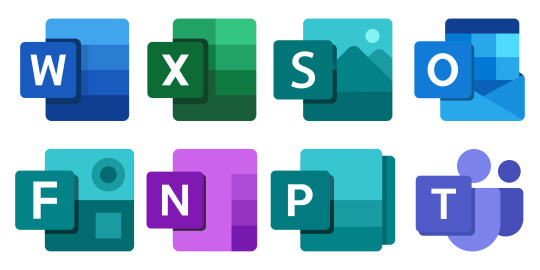Don't wanna be here? Send us removal request.
Text
Excel Beyond Measure: Testing Your Microsoft Office Proficiency
Microsoft Office is the bedrock of modern business, enabling professionals to create, analyze, and communicate with unparalleled efficiency. Among its suite of applications, Microsoft Excel stands out as a powerhouse for data manipulation, analysis, and visualization. This blog delves deep into the realm of Excel, exploring its multifaceted features, the importance of mastering it, and strategies to test and enhance your proficiency.

The Mighty Power of Microsoft Excel
Microsoft Excel is a versatile spreadsheet software that empowers users with a wide range of functionalities:
Data Entry and Organization: Excel provides a structured platform to input, organize, and manage large datasets.
Calculations and Formulas: The program boasts an extensive library of mathematical, logical, and statistical formulas for complex calculations.
Data Analysis and Visualization: Excel's tools like PivotTables and charts allow users to analyze data and present insights visually.
Data Validation and Error Handling: Validation rules prevent inaccurate data entry, while error-checking functions highlight mistakes.
Automation with Macros: Macros enable the automation of repetitive tasks, enhancing efficiency and reducing errors.
Collaboration: Excel's collaborative features, like shared workbooks and real-time editing, facilitate teamwork.
The Importance of Mastering Excel
Enhanced Productivity: Proficiency in Excel accelerates tasks such as data entry, analysis, and reporting, saving valuable time.
Better Decision-Making: Excel's analysis capabilities aid informed decision-making by visualizing trends and patterns.
Efficient Reporting: The software's diverse formatting and charting options create compelling reports and dashboards.
Career Advancement: Excel skills are highly valued across industries, making professionals with Excel expertise stand out.
Testing Your Microsoft Excel Proficiency
Basic Functions: Test your grasp of basic functions like SUM, AVERAGE, and COUNT to assess fundamental proficiency.
Formulas and Functions: Evaluate your understanding of more advanced functions like VLOOKUP, INDEX-MATCH, and IF statements.
Data Analysis: Test your ability to use PivotTables and PivotCharts to analyze complex datasets.
Chart Creation: Demonstrate your skills in creating various chart types to visually represent data.
Data Validation: Showcase your knowledge of data validation rules to ensure data accuracy.
Conditional Formatting: Display your proficiency in using conditional formatting to highlight data trends.
Macro Knowledge: Assess your familiarity with macros by creating a simple automation sequence.
Strategies to Enhance Your Excel Proficiency
Online Tutorials: Access online tutorials and courses to expand your Excel knowledge and learn advanced techniques.
Practice Regularly: The more you work with Excel, the more confident and skilled you become. Regular practice is key.
Explore Advanced Features: Dive into advanced features like Power Query and Power Pivot to master complex data analysis.
Solve Real Problems: Apply Excel to real-world problems to deepen your understanding of its practical applications.
youtube
Conclusion
Mastering Microsoft Excel goes beyond numbers and spreadsheets—it's a gateway to unlocking your potential for efficient data manipulation, insightful analysis, and impactful decision-making. With its multifaceted capabilities, Excel is an indispensable tool for professionals across industries. By testing your proficiency, honing your skills through practice, and delving into advanced features, you can excel beyond measure and position yourself for success in the competitive world of business.
SITES WE SUPPORT
Recruitment Skills – Weebly
0 notes
Text
Fairness Fiasco: Exposing the Truth About Workplace Favoritism
In the realm of work, fairness is the cornerstone upon which trust, engagement, and a thriving organizational culture are built. However, beneath the façade of equal opportunity, an unsettling reality often lurks—workplace favoritism. This blog seeks to shed light on the hidden truths surrounding this fairness fiasco, exploring its impact, root causes, and strategies to rectify this corrosive practice.

The Shadow of Workplace Favoritism
Workplace favoritism occurs when certain individuals receive preferential treatment from supervisors or managers. This favoritism can manifest in various ways, from exclusive assignments and promotions to biased performance evaluations and unequal access to resources.
The Impact of Workplace Favoritism
Erosion of Trust: The perception of favoritism breeds mistrust among employees, leading to a decline in confidence in leadership and the overall organizational structure.
Dampened Morale: When some employees consistently receive special treatment, others may feel undervalued and demotivated, resulting in decreased morale.
Impaired Performance: Employees who believe their efforts won't be fairly recognized might lose their enthusiasm for their work, negatively affecting their performance.
Reduced Collaboration: Favoritism can create an "us versus them" mentality, hampering collaboration and teamwork within the organization.
Root Causes of Workplace Favoritism
Unconscious Bias: Humans naturally gravitate toward those who are similar to them, often leading to subconscious favoritism.
Personal Relationships: Managers may unconsciously favor employees with whom they share personal connections.
Perceived Performance: Employees who appear more confident or assertive might receive preferential treatment, regardless of their actual performance.
Strategies to Address Workplace Favoritism
Promote Transparency: Clearly communicate company policies and expectations to ensure that employees understand how decisions are made.
Implement Fair Evaluation Systems: Develop objective performance evaluation criteria that focus on accomplishments, skills, and contributions rather than personal relationships.
Training and Awareness: Conduct training programs on unconscious bias and workplace ethics to sensitize employees and managers to the potential pitfalls of favoritism.
Encourage Feedback: Establish mechanisms for employees to provide anonymous feedback and voice concerns about perceived favoritism.
Diverse Decision-Making Panels: Involve a diverse group of individuals in decision-making processes, reducing the impact of personal biases.
Mentorship Programs: Implement structured mentorship programs to ensure that all employees have equal access to growth opportunities and guidance.
youtube
Conclusion
Exposing the truth about workplace favoritism requires a collective effort to create an environment where fairness, transparency, and equity reign supreme. By acknowledging the detrimental effects of favoritism, addressing its underlying causes, and adopting strategies to mitigate its impact, organizations can pave the way for a more inclusive, motivated, and harmonious workplace. Remember, true success is built on a foundation of fairness, where every employee's contributions are valued and rewarded based on merit, not favoritism.
SITES WE SUPPORT
Recruitment Skills – Weebly
0 notes
Text
Navigating Talent Seas: Mastering Recruitment and Selection
In the dynamic world of business, an organization's success is anchored in its people—the talent that drives innovation, productivity, and growth. Effective recruitment and selection processes are the compasses that guide companies to find the right individuals who will contribute to their success. This blog explores the intricacies of mastering recruitment and selection, delving into strategies, best practices, and in-depth insights to help organizations navigate the vast seas of talent.

The Crucial Role of Recruitment and Selection
Recruitment and selection are pivotal HR functions that impact an organization's overall performance, culture, and success. Successful recruitment ensures a diverse pool of qualified candidates, while strategic selection identifies those who best align with the company's values, goals, and requirements.
Recruitment Strategies and Best Practices
Clear Job Descriptions: Crafting accurate and comprehensive job descriptions is crucial to attract candidates who possess the necessary skills and experience.
Employer Branding: Build a strong employer brand that highlights the company's culture, values, and growth opportunities to attract top talent.
Diverse Sourcing: Utilize various channels, from job boards and social media to networking events, to reach a wider range of potential candidates.
Employee Referrals: Encourage current employees to refer candidates, as referrals often result in higher-quality hires who are a good cultural fit.
Campus and Industry Connections: Engage with universities and industry events to tap into fresh graduates and professionals who are actively seeking new opportunities.
Selection Strategies and Best Practices
Structured Interviews: Design interview questions that assess both technical skills and cultural fit, and employ a consistent interview process for all candidates.
Behavioral Assessment: Utilize behavioral interview techniques to understand how candidates have reacted to past situations, indicating their potential performance.
Skills Testing: Conduct practical skills assessments or tests to validate candidates' claimed abilities and qualifications.
Reference Checks: Contact references provided by candidates to gain insights into their work ethic, strengths, and areas for growth.
Panel Interviews: Include multiple interviewers from various departments to provide diverse perspectives on a candidate's suitability.
Diversity and Inclusion in Recruitment and Selection
Implicit Bias Training: Train recruiters and interviewers to recognize and address unconscious biases that might affect candidate evaluations.
Inclusive Language: Use inclusive language in job descriptions, ensuring that they appeal to a wide range of candidates and do not inadvertently exclude anyone.
Diverse Interview Panels: Include a diverse group of interviewers to minimize bias and promote fair evaluations.
Technological Advancements in Recruitment
AI and Automation: AI-powered tools can help streamline the screening process by assessing resumes and identifying top candidates based on specific criteria.
Data Analytics: Data-driven insights can guide recruitment decisions by identifying the most effective sourcing channels and evaluating the success of different strategies.
youtube
Conclusion
Navigating the waters of recruitment and selection requires a strategic approach that combines effective sourcing, careful assessment, and a commitment to diversity and inclusion. Organizations that invest time and resources in mastering these processes will not only find the right talent but also foster an environment of innovation, collaboration, and growth. By staying attuned to evolving trends and technologies, businesses can confidently navigate the talent seas and secure their position as industry leaders.
SITES WE SUPPORT
Recruitment Skills – Weebly
0 notes
Text
Mastering Microsoft: A Comprehensive Office Skills Assessment
In today's digital age, proficiency in Microsoft Office has become a fundamental skill for success in various professional domains. From creating documents and crunching numbers to delivering impactful presentations, Microsoft Office tools are ubiquitous. This blog aims to provide a comprehensive overview of the essential Microsoft Office skill test, their significance in the modern workplace, and strategies to master them effectively.

The Core Microsoft Office Suite
The Microsoft Office suite encompasses a range of applications designed to enhance productivity, communication, and data management. The core applications include:
Microsoft Word: A powerful word processing tool for creating documents, reports, and letters with formatting, tables, images, and more.
Microsoft Excel: A versatile spreadsheet program used for data analysis, calculations, chart creation, and complex financial modeling.
Microsoft PowerPoint: A presentation software that enables the creation of visually engaging slideshows for educational, business, or informational purposes.
Microsoft Outlook: An email client that helps manage emails, calendars, tasks, and contacts, promoting efficient communication and organization.
Microsoft Access: A database management system that allows users to store, manage, and analyze large sets of data.
Microsoft OneNote: A digital note-taking application that facilitates the organization of notes, drawings, audio recordings, and more.
The Significance of Mastering Microsoft Office Skills
Enhanced Productivity: Proficiency in Microsoft Office tools streamlines tasks, reducing the time spent on document creation, data analysis, and presentations.
Professional Communication: Microsoft Outlook aids effective communication by providing an organized platform for emails, appointments, and tasks.
Data Analysis and Reporting: Microsoft Excel's advanced functions empower professionals to analyze data, create interactive dashboards, and generate insightful reports.
Dynamic Presentations: Microsoft PowerPoint enables the creation of visually appealing presentations that effectively convey information and ideas.
Efficient Data Management: Microsoft Access offers a structured approach to managing data, aiding in creating robust databases for various purposes.
Collaboration and Documentation: Microsoft OneNote fosters collaborative note-taking, making it easier to capture and share ideas within teams.
Mastering Microsoft Office: Strategies for Success
Comprehensive Training: Invest in structured training courses or online tutorials tailored to each application's features and functionalities.
Hands-on Practice: Regularly apply the skills learned through practical projects, creating documents, spreadsheets, presentations, and databases.
Keyboard Shortcuts: Familiarize yourself with keyboard shortcuts to expedite tasks and navigate the applications more efficiently.
Templates and Styles: Utilize pre-designed templates and consistent formatting styles to ensure professional-looking documents and presentations.
Data Analysis Techniques: Learn Excel functions such as VLOOKUP, PivotTables, and macros to efficiently analyze and visualize data.
Visual Storytelling: Explore advanced PowerPoint features to create engaging presentations with multimedia, animations, and transitions.
Automation: Discover the power of macros and automation in Excel to streamline repetitive tasks and workflows.
youtube
Conclusion
Mastering Microsoft Office is more than just a technical skill—it's a gateway to enhanced productivity, efficient communication, and impactful data management. Whether you're a student, professional, or business owner, proficiency in the Microsoft Office suite can significantly elevate your capabilities. By following a comprehensive learning approach, engaging in hands-on practice, and continually exploring advanced features, you can unlock the full potential of these tools and position yourself for success in today's digitally driven workplace.
SITES WE SUPPORT
Recruitment Skills – Weebly
0 notes
Text
Navigating the Shadows: Unmasking Favoritism in the Workplace
In the complex landscape of the modern workplace, where diversity, inclusion, and equal opportunity are championed, the insidious specter of favoritism still lurks in the shadows. The term "favoritism" refers to the practice of showing preferential treatment to certain individuals or groups over others, often based on personal connections, similarities, or perceived performance. This phenomenon can have profound implications for employee morale, productivity, and overall organizational culture. In this blog, we will delve deep into the world of favoritism in the workplace, exploring its causes, effects, and strategies to navigate this challenging issue.

The Anatomy of Workplace Favoritism
Workplace favoritism can take various forms, from subtle gestures of preference to more overt displays of special treatment. Examples include managers giving plum assignments to their personal acquaintances, promoting individuals they share a rapport with, or even engaging in biased decision-making during performance evaluations. Such behavior not only erodes trust but also perpetuates a sense of inequality among employees.
Causes of Workplace Favoritism
Unconscious Bias: Often, favoritism stems from unconscious biases that individuals may not even be aware of. These biases can be influenced by factors such as shared backgrounds, interests, or even physical appearance.
Personal Relationships: Managers may unconsciously favor employees they have personal relationships with, both inside and outside the workplace, leading to perceived or actual preferential treatment.
Similarity Attraction: People tend to gravitate toward others who are similar to them in various ways, which can inadvertently result in unequal treatment of those who don't share the same characteristics.
Performance Misjudgment: Managers may wrongly attribute an employee's success to personal qualities rather than their actual performance, leading to favoritism towards those they view as talented or hardworking.
Effects of Workplace Favoritism
Demoralization: Employees who perceive favoritism can feel demoralized and disheartened, leading to a decrease in motivation and engagement.
Conflict and Resentment: Unaddressed favoritism can breed resentment among coworkers and give rise to interpersonal conflicts.
Reduced Productivity: When employees believe that their efforts won't be recognized or rewarded fairly, their commitment to their work and the organization can decline.
Diversity and Inclusion Erosion: Favoritism can hinder diversity and inclusion efforts by creating an environment where only certain individuals are given opportunities for advancement.
Navigating the Shadows: Strategies to Combat Favoritism
Awareness and Training: Organizations can conduct training programs that raise awareness about unconscious bias and its potential impact on decision-making.
Transparent Performance Metrics: Clearly defined performance metrics and evaluation criteria can help ensure that promotions and rewards are based on objective measures rather than personal preferences.
Regular Feedback: Encouraging regular feedback from employees and providing a platform for voicing concerns can help identify instances of favoritism and address them promptly.
Diverse Hiring and Promotion Panels: Involving a diverse group of decision-makers in hiring and promotion processes can mitigate the influence of personal biases.
Mentorship and Sponsorship Programs: Implementing mentorship and sponsorship initiatives can provide equal growth opportunities for all employees, regardless of their relationships with superiors.
youtube
Conclusion
Favoritism might be a persistent challenge in the workplace, but it is not insurmountable. By recognizing its presence, understanding its underlying causes, and implementing strategies to counter its effects, organizations can create a more equitable and inclusive work environment. Ultimately, addressing favoritism is not just about creating fairness—it's about fostering an atmosphere where every individual has the opportunity to thrive based on their merits and contributions, unburdened by the shadows of bias.
SITES WE SUPPORT
Recruitment Skills – Weebly
1 note
·
View note